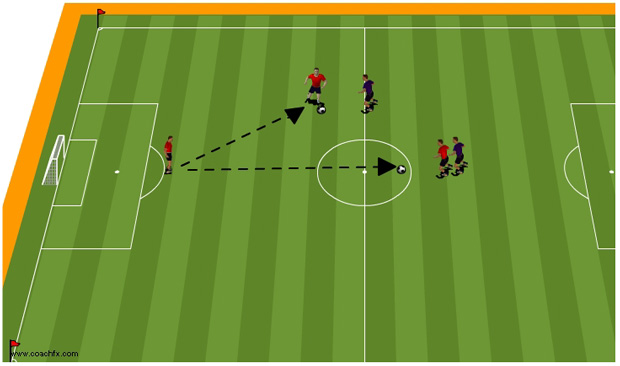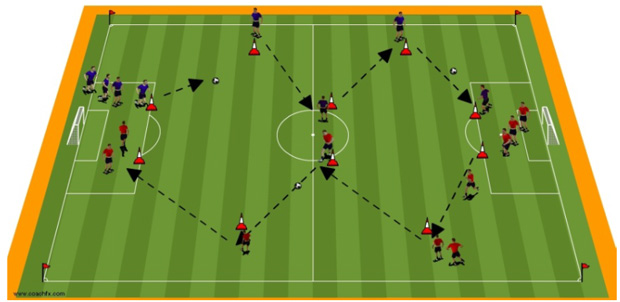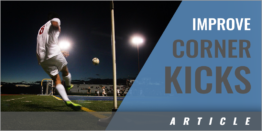| Soccer is a Sideways on Sport |
| By: Jeff Tipping - UEFA A License, USSF A License, Former NSCAA Director of Coaching Education
Provided by: Amplified Soccer Athlete Baseball, cricket, boxing and golf are all sideways on sports. Baseball players, cricketers and boxers are sideways on because they are one sided, right or left handed. This is not the only reason they are sideways on, however. Players have much less capacity to shift weight if they are flat footed and standing square. Shifting weight from back foot to front foot is one of the secrets to impact power. This is true of soccer players also but the reason we call this section "Sideways On" is because soccer is a 360 degree sport with high levels of activity going on all around the players and they need as wide a scope of vision as possible. Being sideways on gives soccer players the ability to see a comprehensive field of view and gives them many more choices than if they were facing the wrong way receiving a straight pass. In the diagram below the player who is at an angle to the ball is in a much better position to see the field of play and execute various technical and tactical options than the player at the top of the half way line.  The Latin players, generally, hit very few straight passes and they are the masters at the angled pass and the sideways on reception. They are, also, masters of the "front foot pass" i.e. the pass with the outside of the foot which is closest to the target. This is a pass which players make as part of their running gait and is an excellent disguised pass. The other pass which has come into vogue is the toe poke pass. Both the toe poke pass and the front foot pass are great passes for disguise as there are not the same, telltale, opening up of the hips, as with the inside of the foot pass. Players who run straight towards the ball carrier give themselves very few options when the ball is delivered. I encourage perpendicular movement when showing for a pass. The checking player checks back but checks back at an angle to maximize the options. The following exercises are an introduction to the concept of moving into an angle to receive a forward pass from a team mate. Sideways on Soccer Warm Up Half of the squad goes into a large circle with the other half in the middle with the ball. The blue players pass the ball to the reds and then move to get the ball back from them. The players move into an area adjacent to the red player so as to give them a sideways on position when the red player passes it. The blue players are asked to look over their shoulder as if they were scanning the field to see where the opponents may be and if they are being closely marked. If they decide that they are not being followed they indicate that the pass should go to the foot closest to the inside of the circle. The practice progresses so that the blue indicates that he is being followed and wants the pass to the foot closest to the red player so as to have his body between the opponent and the ball. The blue player plays a "double pass" with the red and spins around the imaginary opponent for the return pass.
Sideways on Soccer. Exercise One. Staggered Cone Drill A "Slalom Course" of cones is laid out in a staggered fashion. There are one or two player at each cone except for the end cones where the players begin - there could be four or five there. The players dribble out from their cone and pass the ball to their team mate at the next cone. The player who passed it then goes to that cone. Initially the players on the cone simply back off the cone and receive the ball behind the cone. They receive the ball and then pass it on to the next cone. When a player gets to the end he dribbles the ball across to the adjacent set of cone and repeats the process. Emphasis is on disguising the pass as much as they can by using the "front foot" for the pass - i.e. the foot closest to the target player or a poke pass.
|








